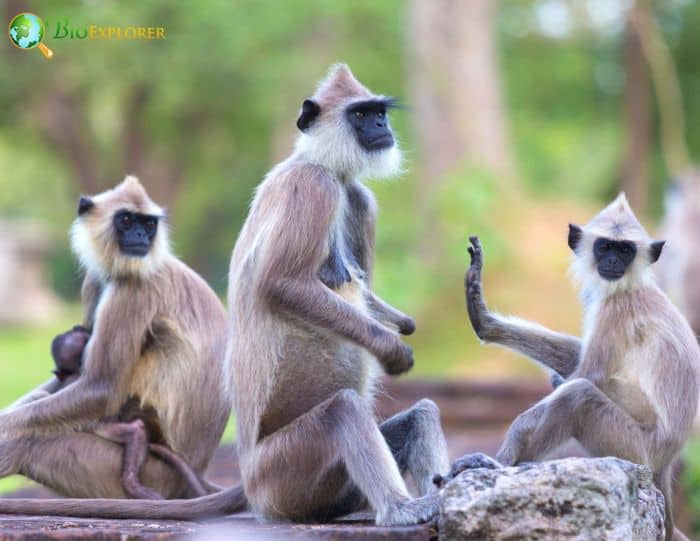
| Animalia | Primates | Cercopithecidae | Semnopithecus | Semnopithecus entellus |


- Common Name: Bengal Sacred Langur
- Taxonomy Classification Year: 1797
- Monkey Size: 45.1 to 78.4 cm (17.8 to 30.9 inches)
- Skin Color(s): Silver-gray
- Habitat: Forests rainforests, and shrublands
- Diet: Omnivorous
- Native Countries: India, Bangladesh
Bengal Sacred Langur Distribution
Bengal Sacred Langur Characteristics

The Bengal sacred langur[1], also known as Hanuman’s langur and the northern plains gray langur, is a primate species in the Cercopithecidae family.
- The Bengal sacred langur has a silvery gray coat with a distinctive yellow tint and black faces, ears, fingers, and toes.
- Unlike other gray langurs, this species lacks a crest. They have white facial hair and darker hair on their backs.
- Their bellies are reddish-gold in color. Small babies are brown in color, and their fur turns gray as they grow. They possess long gray tails around one and a half times the length of their body and are used for locomotion and balance.
- Their wide mouths turn sideways, giving them a stern and slightly sullen expression.
Bengal Sacred Langur Facts

- The Bengal sacred langurs are often referred to as “Hanuman’s langurs“, named after Lord Hanuman – the Hindu god.
- They have flexible social organization and can live in groups composed of only males, multiple females, and males, or multiple females and a single male.
- Originally thought of as a single species, scientists now recognize eight species of gray langurs in the Semnopithecus genus.
- Bengal sacred langurs are believed to have been introduced by Hindu pilgrims on the banks of the Jalangi River in western Bangladesh.
- Reproduction in the Bengal sacred langurs is linked to food availability. Therefore, only when females have enough food and are in good condition can they reproduce.
Suggested Reading: Names of Different Kinds of Monkeys
Cite This Page
APA7MLA8Chicago
BioExplorer.net. (2025, April 14). Bengal Sacred Langur. Bio Explorer. https://www.bioexplorer.net/animals/mammals/monkeys/bengal-sacred-langur/.
BioExplorer.net. "Bengal Sacred Langur" Bio Explorer, 14 April 2025, https://www.bioexplorer.net/animals/mammals/monkeys/bengal-sacred-langur/.
BioExplorer.net. "Bengal Sacred Langur" Bio Explorer, April 14 2025. https://www.bioexplorer.net/animals/mammals/monkeys/bengal-sacred-langur/.










